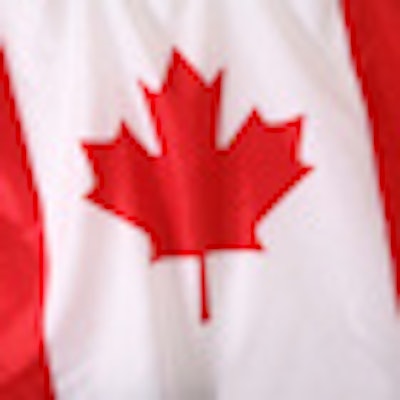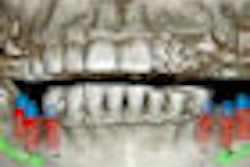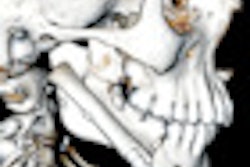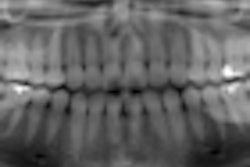
Health officials in Ontario, Canada, are considering revising a moratorium that prohibits any dental practitioner in the province who is not also an oral radiologist to buy or install cone-beam CT (CBCT) equipment.
All radiology equipment in Ontario is regulated by the Ontario Ministry of Health and Long-Term Care through the Healing Arts and Radiation Protection (HARP) Commission and the HARP Act, which was enacted in 1990. Among other things, HARP classifies all CT equipment -- including cone-beam CT -- into a single category.
In 2005, amid growing concerns about radiation exposure, the Ontario director of x-ray safety requested that the HARP Commission review the health and safety issues related to the ordering and operation of dental CT scanners in dental offices. In early 2006, the ministry received a letter from the chair of the HARP Commission requesting that a moratorium be placed on the designation of dental CT scanners in dental facilities but not prohibiting the purchase of dental CT systems.
“This is completely 'cart before the horse.”
— Ernest Lam, DMD, PhD, University
of Toronto
In May 2006, the HARP Commission submitted to the health ministry an interim report outlining public safety concerns with the use of this technology in a dental setting. In 2007, the HARP Commission and the Diagnostic Imaging Safety Committee did its own review of cone-beam CT and concluded that only oral and maxillofacial radiologists have the necessary training to order and operate dental CT systems.
"Compared to CT scanners used for body imaging, dental CBCT scanners are relatively simple and use significantly lower radiation doses to produce high-resolution images. Image acquisition is almost completely automated, with a limited number of parameters that can be adjusted," the committee noted in a 2007 report. "However, if dental CBCT scanners become readily available for use by general dentistry practices, it is possible that this technology will replace panoramic radiology for conventional diagnostic dental examinations. This raises concerns about a potential increase in patient and population exposure to radiation."
Also of concern "is the current lack of training for general dentists in the interpretation of images generated by dental CBCT scanners," the committee noted. "Within the dental profession, the specialty of oral and maxillofacial radiology has training in both the application and the interpretation of images produced by dental CBCT scanners."
Following the committee's recommendations, the ministry altered the moratorium to allow dentists who are also oral and maxillofacial radiologists to install and utilize cone-beam CT systems, according to David Jensen, media relations coordinator for the ministry of health.
Evolving regulations
As a result, today dentists in Ontario who prescribe a CT study refer the patient to a hospital or imaging center, wrote Ken Serota, DDS, in a recent blog on the Oral Health Journal website (November 8, 2010). In most cases, these facilities use a conventional fan-beam CT device rather than a cone-beam CT system optimized for dental studies, according Dr. Serota.
But it appears this scenario is about to change. In 2009, at the request of the ministry of health, the Royal College of Dental Surgeons of Ontario (RCDSO) and the Ontario Dental Association (ODA) drafted an amendment to the current HARP guidelines that would create two new subcategories of CT equipment for dentistry -- small field-of-view (FOV) cone-beam CT and large FOV cone-beam CT.
In addition, the amendment would allow all dental practitioners -- not just oral radiologists -- to use and purchase small FOV cone-beam CT systems after completing a multiday certification course. Large FOV dental cone-beam CT would be available to all dental specialties subject to the practitioner interpreting 50 cases with an oral radiologist.
These draft guidelines were approved by the RCDSO in November 2009 and submitted to the ministry of health for review -- a process that is still ongoing but expected to be finalized this year.
"These draft guidelines acknowledge that this technology represents a significant addition to the imaging armamentarium available for the investigation of patients, while taking into consideration the need to ensure patients are not exposed to unnecessary amounts of radiation," the RCDSO noted in a November 12, 2009, meeting. "This matter is now with the government staff of HARP to develop a regulation for approval by the RCDSO and the ministry of health."
The proposed legislation includes educational requirements that will qualify dentists to receive the necessary permit. Ernest Lam, DMD, PhD, an associate professor of oral and maxillofacial radiology at the University of Toronto, will lead the first certification course to qualify practitioners in Canada for small FOV CT use; the course will be held January 28-29 at the University of Toronto Centre for Continuing Dental Education.
"This is completely 'cart before the horse,' but I'm doing it," Dr. Lam told DrBicuspid.com. "In this province, you have to take a course in order to give sedation to patients in a dental office. When they pass the course, they can give the certificate to the registry. It will be the same thing with our course with regard to dentists being able to buy and install cone-beam CT systems."
Legislation pending
While some expect the legislation to be passed this spring, the ministry of health remains vague. "We are currently reviewing the recommended guidelines from the college," Jensen wrote in an e-mail to DrBicuspid.com. "There is no definitive timeline as to when changes could be made to the HARP Act."
In the meantime, Dr. Lam intends to conduct additional certification courses, and said that other provinces in Canada are taking note of Ontario's efforts with regard to regulating cone-beam CT and may follow suit.
"Any other province in Canada, this legislation does not exist," he said. "In other provinces at this time, any specialist or nonradiologist dentist can buy and install a CT system. But some -- such as Saskatchewan and Alberta -- are now actively looking at the Ontario model and wondering if they should do something similar."
But Wayne Tiefenbach, head of the radiation safety program at the Saskatchewan Ministry of Labour Relations and Workplace Safety, said that to his knowledge the only change that is being considered in Saskatchewan at this time is how often a cone-beam CT system should be inspected.
"We have a safety and maintenance program to ensure that all x-ray equipment is inspected and is sound," he told DrBicuspid.com. "With dental x-ray systems, it is once every three years. But with cone-beam CT, we are telling people it needs to be done yearly. And we are in the process of amending our legislation to reflect this."
Copyright © 2011 DrBicuspid.com



















